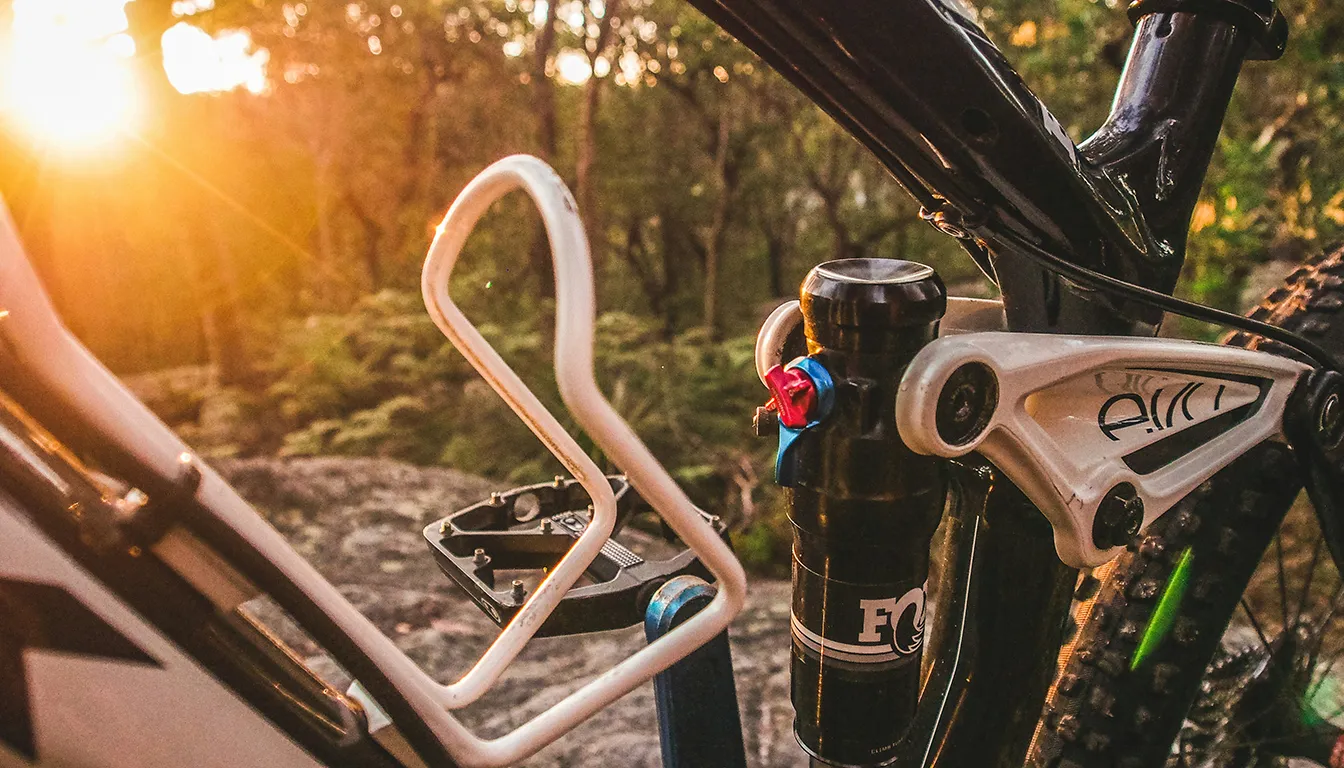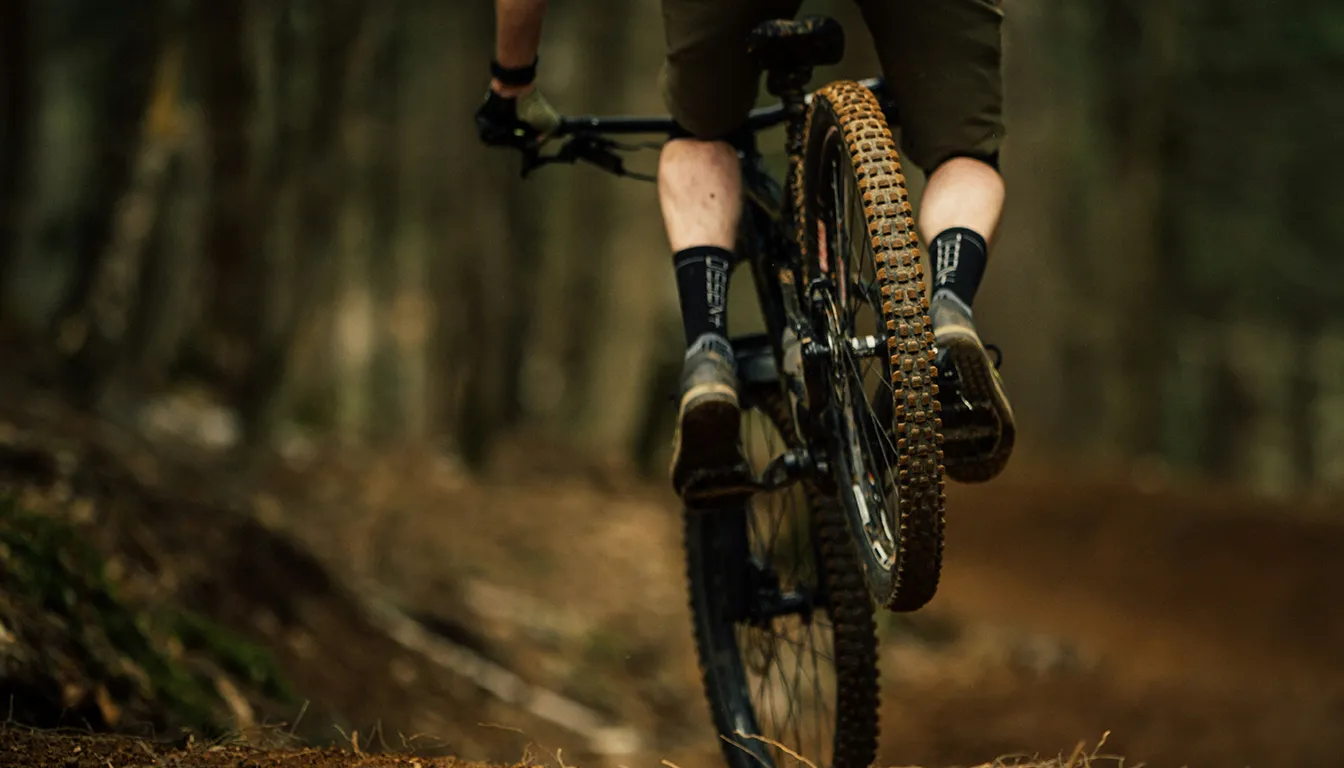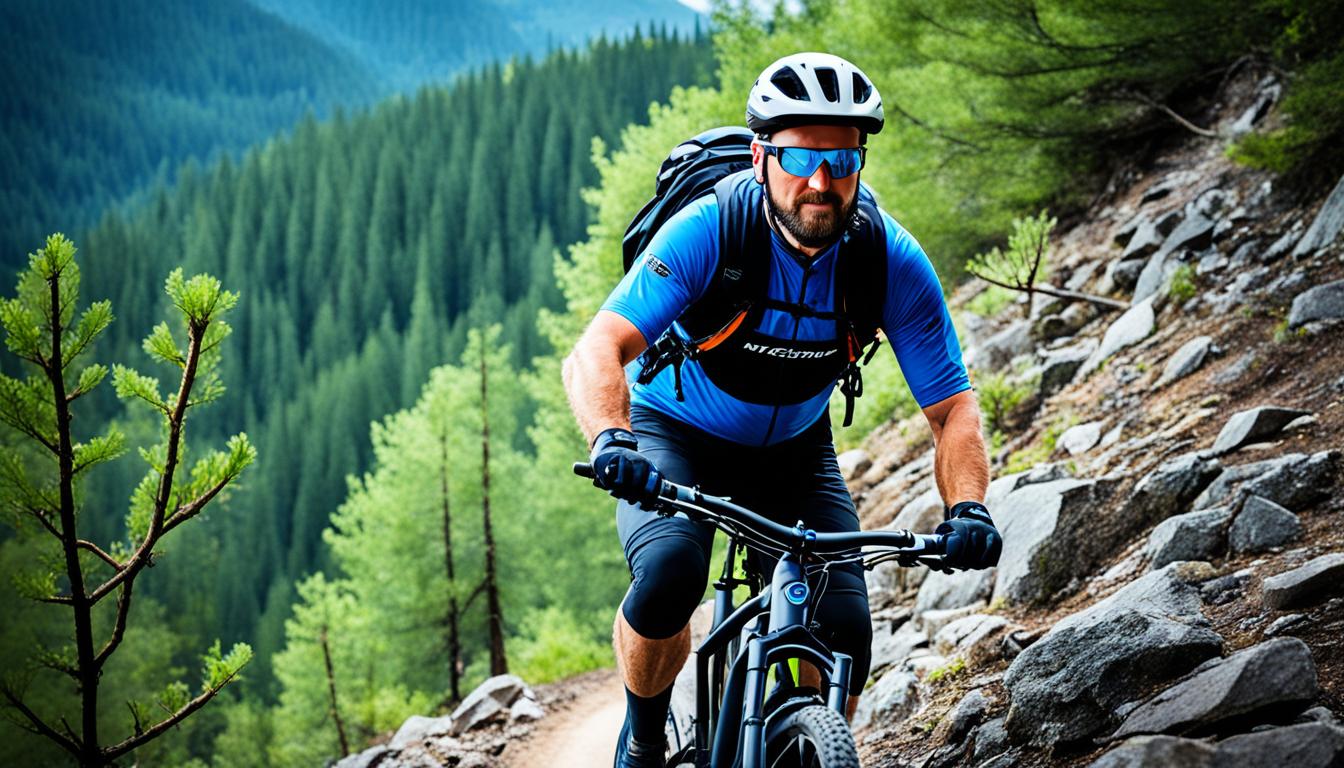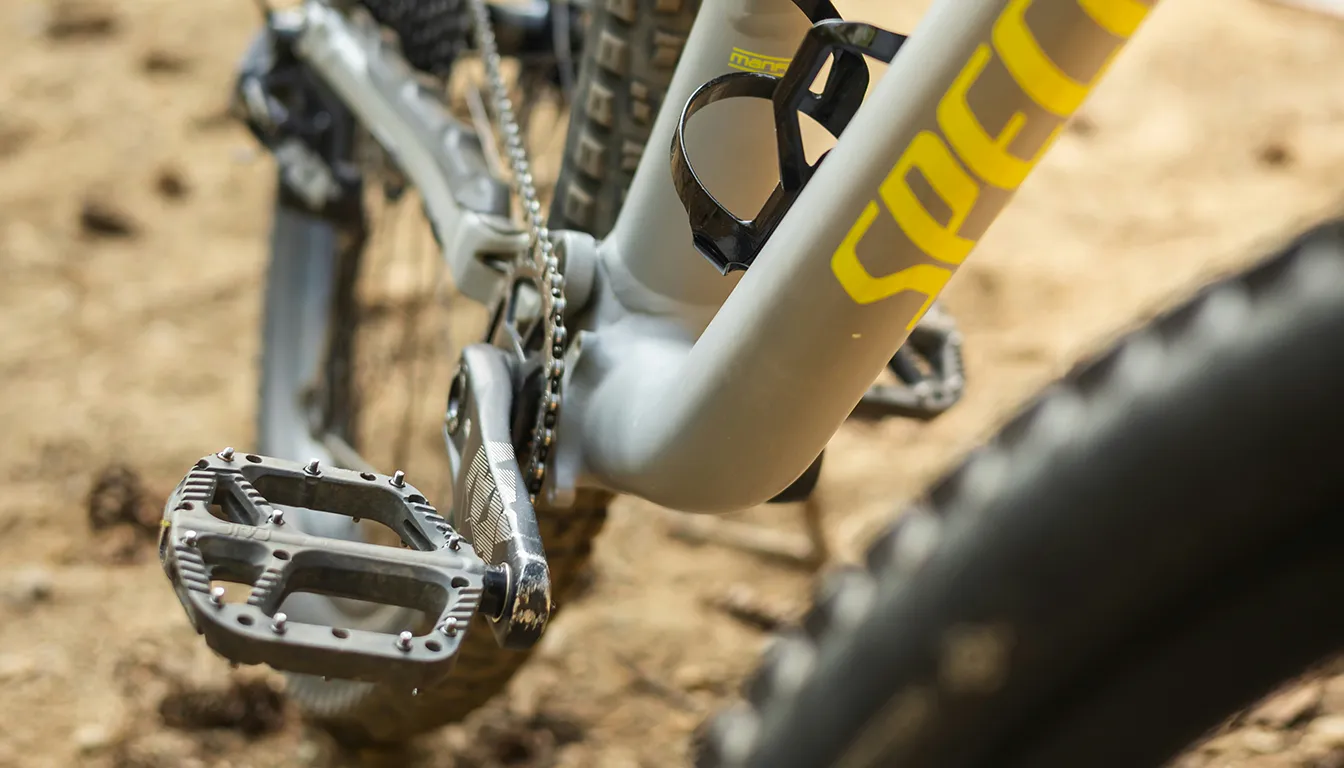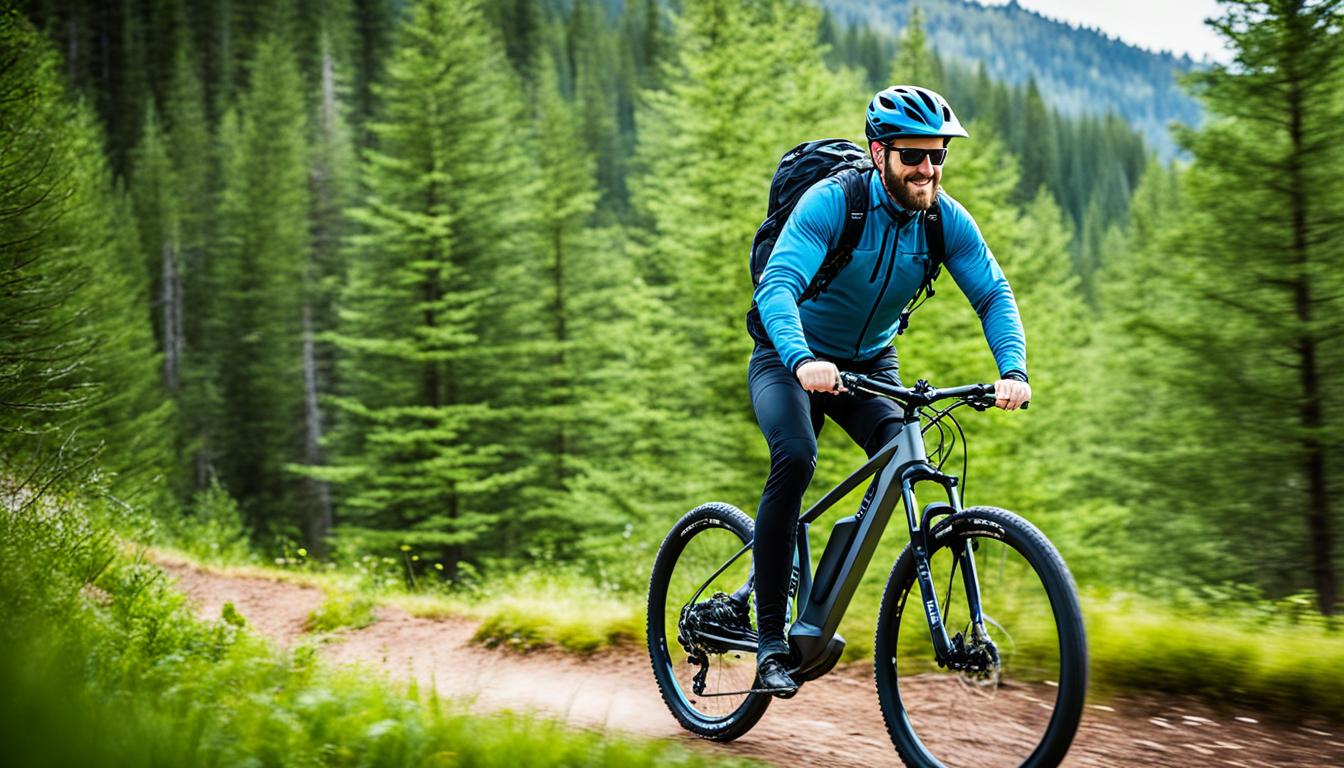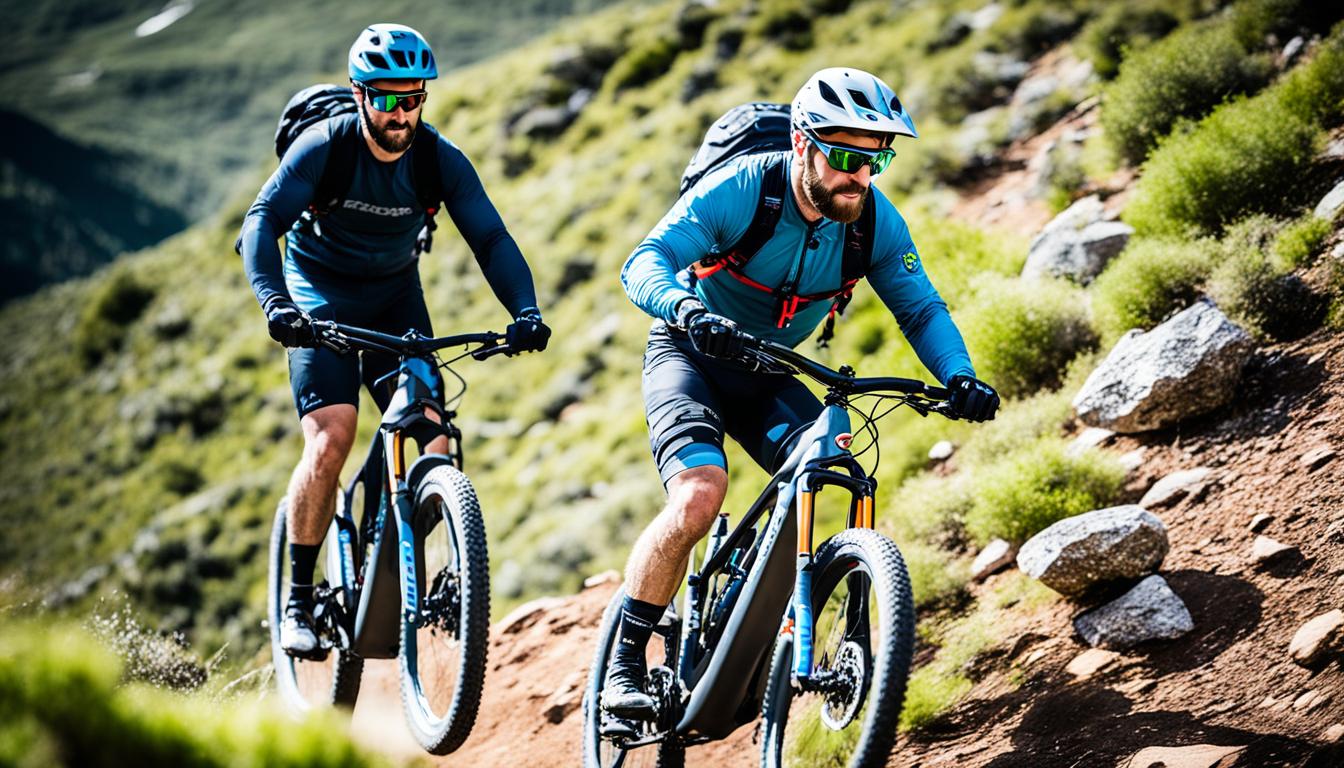Riding an e-bike on mountain trails is exhilarating. Yet, keeping the battery going is a key worry for riders. It’s crucial to know your e-bike’s battery limit. Long trips can use up power fast. This advice helps you get the most out of your ride without extra costs.
Using smart riding methods makes a big difference in your e-bike’s power efficiency. This lets you enjoy longer rides on picturesque trails. Learning to mix power use with pedalling makes every trip better. It means more fun rides without spending more money.
Understanding E-Bike Battery Capacity
In mountain biking, knowing about e-bike battery capacity is key for a good ride. The battery’s capacity affects how far you can go, especially on various terrains. While bigger batteries might seem better, many aspects impact performance.
The importance of battery capacity for mountain riding
For mountain biking fans, battery capacity tells you how far you can ride. You’ll find batteries sized from 400Wh to 750Wh for longer trips. Some riders choose lightweight e-bikes, with 250 to 320Wh, for better agility on rough paths.
Battery weight varies from 650g to 1kg per 100Wh. This affects how the bike handles, especially on sharp climbs or tricky descents. How you ride, the terrain, and the bike’s total weight matter for battery life. This helps bikers make the most of their e-bikes.
Common misconceptions about battery range
It’s a mistake to think a larger battery always means more range. Riding well and keeping your e-bike in check also matter. E-bikes work best at 10 to 20 degrees Celsius for better battery life. Riders can boost their range by riding smarter, like keeping a steady cadence.
Battery capacity greatly affects how far you can go. In the UK, e-bike ranges vary from 32 to 80 kilometres. This depends on how much you weigh, the terrain, and the battery size. Knowing these details can boost your mountain biking fun.
Optimising Your Riding Technique
Improving your e-bike’s efficiency on mountain rides comes down to your technique. Small changes in the way you ride can greatly enhance both your bike’s performance and its battery life. Knowing how to maintain the best cadence and adjust your style makes each trip better and more eco-friendly.
The significance of maintaining optimal cadence
Maintaining a cadence of about 70-75 revolutions per minute is key. This pace helps get the most from your e-bike’s motor while easing strain on your body, especially your knees. Keeping this rhythm ensures you’re using energy well, making the battery last longer on rides.
How riding style affects battery consumption
The way you ride greatly impacts your battery usage, especially when going uphill or downhill. Fast acceleration and using high gears can burn through your battery quicker, shortening your ride. Instead, smooth, even pedalling makes your battery last longer. Using circular pedal motions and keeping a steady pace helps save energy. Also, steering clear of sudden stops by avoiding obstacles keeps you from wasting battery power. For tips on climbing efficiently, check out this guide.
Choosing the Right Mode for Your Terrain
Selecting the right e-bike mode can make your ride better, especially on different grounds. It’s important to know about pedal-assist levels to get the best performance and save battery.
Understanding pedal-assist levels
E-bikes come with several pedal-assist options. These let riders adjust the support they need for different landscapes. You can pick from Eco, Mid, and Turbo modes. Each gives a different level of help. The Eco mode is good for long rides on flat areas. It keeps the battery going longer by using less power on easier paths.
When to use higher versus lower assistance settings
For tough hills or rough land, using higher e-bike modes helps a lot. Turbo mode gives a big boost up steep hills, making it easier to go up. Then, using lower settings on downhill or flat areas saves battery. Using Turbo mode too much on flat areas can drain the battery fast.
Choosing the right assistance level helps save energy and makes your ride more enjoyable. Knowing when to switch modes makes a big difference in how long your battery lasts on a trip.
| Assistance Mode | Recommended Use | Battery Consumption |
|---|---|---|
| Eco | Flat terrain, leisurely rides | Lowest |
| Mid | Moderate hills, general riding | Moderate |
| Turbo | Steep climbs, challenging trails | Highest |
Managing your pedal-assist levels well means you’ll have a better time riding. And, your e-bike will be ready for longer trips. Riders who get good at this can really enjoy what their e-bike can do, on all kinds of paths.
How to Conserve Battery on E-Bike During Mountain Rides
Riding an E-bike in the mountains is exciting. Yet, saving battery power boosts that joy. Here we’ll show you how to do it, highlighting route planning.
Tips to increase range without additional costs
How you care for your E-bike affects its battery. Follow these range tips to help:
- Keep tyre pressure right to fight rolling resistance.
- Ensure the drivetrain is clean and well-lubed for smoothness.
- Lighten your backpack to reduce motor strain.
- Use eco mode to save energy when you can.
These steps greatly help in saving battery on your trips. For more on upkeep, see this cleaning and maintenance guide.
Properly planning your route for efficiency
Smart route planning is key for battery saving on tough tracks. Keep these in mind:
- Steer clear of steep climbs and unnecessary detours.
- Use navigation apps for the best routes.
- Know where to find charging stations.
- Adjust pace according to the land, slower can be better.
Knowing your battery’s limits helps in long journeys. Aim to keep charge between 20% and 80%. For more tips, check this E-bike advice.
Maintenance Tips for Your E-Bike
Keeping your e-bike in top shape is key to enjoying great rides and making the battery last. It’s smart to check and service it regularly to better its performance and extend its life. Pay attention to the bike’s structure, looking after the drivetrain, and checking the tyre pressure often.
Keeping your bike in top condition
Looking after your e-bike well includes taking care of many parts. This is very important for both your safety and the bike’s performance. Make sure to regularly check the brakes, gears, and chain to prevent problems. E-bikes need more care for their drivetrain than regular bikes due to the extra work it does.
Importance of tyre pressure and clean drivetrain
Right tyre pressure is a must for the best ride on your e-bike. Wrong pressure can make riding hard and use up the battery fast. Keep the pressure just right as suggested by the bike’s guide to improve the ride and battery life.
A clean drivetrain also plays a big role. By keeping the drivetrain clear of dirt, you reduce friction. This helps move power from the motor to the wheels better. Cleaning it can boost performance and save battery. Fixing small things like brake drag or removing dirt can also help the battery last longer.
| Maintenance Task | Frequency | Benefits |
|---|---|---|
| Inspect brakes and gears | Monthly | Increased safety and performance |
| Lubricate drivetrain | Every 100 km | Enhanced efficiency and battery conservation |
| Check tyre pressure | Before each ride | Improved grip and reduced battery strain |
| Clean bike and components | Weekly | Optimal operation and longevity |
Utilising the Right Equipment
Choosing the right equipment for e-mountain biking boosts your ride and saves battery power. Tubeless tyres are a top upgrade. They cut down puncture risks and let you use lower pressures. Lower pressures mean better grip and comfort on rough trails. This helps you tackle tough routes with less battery use.
Benefits of tubeless tyres for e-mountain biking
Tubeless tyres are great for off-road biking. They get rid of the inner tube, reducing pinch flats. You can also use them at lower pressures for more grip and stability. This is helpful in wet or uneven grounds. With better traction, your battery works more efficiently on climbs and descents.
Choosing gears for maximum efficiency
Choosing the right gears is crucial. The correct gear set-up eases the strain on you and your e-bike’s motor. A larger cassette means easier climbing and smoother pedalling. Keeping your gears well-maintained is vital. Make sure they’re aligned and lubricated to avoid draining the battery. Also, using lower gears with more pedalling aid saves battery, especially when the terrain changes.
FAQ
How can I optimise my riding technique to conserve battery power?
Keep your cadence around 70-75 revolutions per minute to save battery. This approach is good for both motor efficiency and your knees. Ride smoothly and use circular pedal strokes to help keep the battery longer on rides.
What factors should I consider to understand my e-bike battery capacity?
Look at the battery’s watt-hour rating to gauge travel distance. Consider how you ride, the type of terrain, and the bike’s total weight. Even with a standard battery, riding efficiently can extend your travel range.
When should I use lower pedal-assist settings on my e-bike?
Use lower pedal-assist on easy paths or flat terrain to save power. It avoids using too much battery. Switching assist levels smartly saves energy over your whole ride.
How does terrain impact my e-bike’s battery performance?
Tough terrains like steep hills need more pedal-assist, using more battery. Flatter areas can manage with less power. Choose routes with fewer climbs to save battery on mountain trips.
What are some simple maintenance tips to enhance battery range?
To improve battery life, maintain correct tyre pressure and keep the drivetrain clean. Regular checks for issues like brake friction or filth increase efficiency. Proper maintenance ensures your bike runs well, extending battery range.
Why is it important to keep an eye on my e-bike battery levels?
Knowing your battery level gives confidence while riding. It ensures you plan well, preventing power loss mid-ride. It makes mountain biking with an e-bike more enjoyable.
Are tubeless tyres better for battery conservation while mountain biking?
Tubeless tyres reduce punctures and allow low pressure, which is great for mountain biking. They improve grip and comfort, and lower pressure means better battery use due to efficient rolling.
What should I do if my battery runs low during a ride?
Carry an extra battery or charger for long rides. Use apps to find shorter routes and charging spots. It helps manage your trip to avoid running out of battery.

